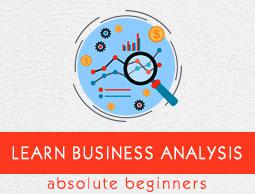Business Analysis - Tools and Techniques
A Business Analyst should be familiar with various analytical tools and related technologies when you are wearing the BA hat. I mean, if you are holding this position.
As we have already learnt earlier, business analysis is a process where you are trying to understand a business enterprise and identifying opportunities, problem areas, problems and meeting a wide range of people having wide range of roles and responsibilities like CEO, VP, Director and understanding their business requirements.
Fundamentally, there are 3 types of Business analysis which we can categorize into −
Strategic Analysis − Strategic business analysis deals with pre-project work. It is the method or process of identifying business problems, devising business strategies, goals and objectives helping the top management. It provides management information reporting for effective decision making process.
Tactical Analysis − It involves knowledge of specific business analysis techniques to apply at the right time in the appropriate project.
Operational Analysis − In this type of Business analysis, we are focussed towards the business aspect by leveraging information technology. It is also a process of studying operational systems with the aim of identifying opportunities for business improvement.
For each type of analysis, there are a set of tools which are available in the market and based on organizational needs and requirements, these are to be used.
However, to materialize business requirements into understandable information, a good BA will leverage techniques Fact-Finding, Interviews, Documentation Review, Questionnaires, Sampling and Research in their day-to-day activities.
Functional and Non-Functional Requirements
We can breakdown a requirement into two principal types like Functional and Nonfunctional requirements.
For all the technology projects, functional and non-functional requirements must be segregated and separately analyzed.
To define the proper tool and an appropriate technique might be a daunting challenge. Whether you are doing a brand-new application or making change to an existing application. Considering the right technique for the functional process is an art by itself.
An overview of the widely-used business analysis techniques which are currently in the market −
| Processes |
Techniques |
Process Deliverables (Outcomes) |
| To Determine Functional and Non-Functional Requirements |
- JAD Sessions
- Scenarios and Use-cases
- Organizational Modeling
- Scope Modeling
- Functional Decomposition
- Interviews
- Observation (Job Shadowing)
- Focus Groups
- Acceptance and Evaluation
- Sequence Diagrams
- User Stories
- Brainstorming
- Storyboarding
- Prototyping
- Structured Walk-through
- Event Analysis
- Business Rule analysis
- Requirements Workshops
- Risk Analysis
- Root Cause Analysis
|
Business Requirements Documents −
- Business and Functional Requirements
- Non-Functional Requirements
- Business Rules
- Requirements Traceability Matrix
Common Template −
- Business Requirements Document
|
Applicability of Tools and Process
Although there are a variety of tools and procedures available to business analysts, it all depends upon the current practices of the organization and how they would like to use it.
For example, root-cause analysis is used when there is a requirement to go deeper into a certain important area or function.
However, business requirements document is the most popular and accepted way to put the requirements in documentation format.
In the subsequent chapters, we will be discussing some of the above techniques in-depth.


